What is buddhism?
- Buddhism is a major world religion, or in a better sense, philosophy.
- It is the 4th largest religion of the world, and has about 300,000,000 people living by it.
- It explains the purpose of life, injustices and inequality around the world.
- It also helps people by providing a way of life that will lead to true happiness.
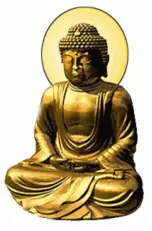
The history of buddhism
- It was all started by Buddha, who was a prince in Lumbini, 2500 years ago.
- He was very unhappy in his royal life, so he set off on a 6 year journey, exploring other religions.
- After his long journey and much meditation he was finally “enlightened”.
- He found the middle path, the key to human happiness. For the rest of his life he wandered Asia, preaching his new religion.
What did Buddha teach?

- He taught the 4 Noble truths which sum up Buddhism religion
- He also taught the noble eight fold path
- He taught to lead a moral life, be mindful and aware of thoughts and actions and to develop wisdom and understanding
- He also taught the 5 precepts
The noble eightfold path
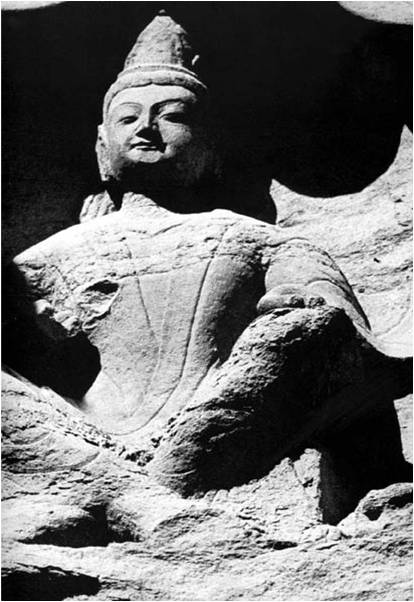
It taught 8 simple rules:
- To have a right understanding
- To have right thoughts
- To use right speech
- To do right actions
- To deal with right livelihood
- To give a right effort
- To have a right mindfulness
- To use the right meditation
Founder of Buddhism
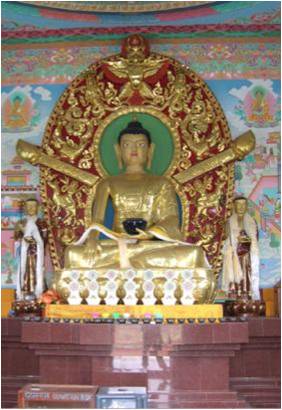
- Siddharta Gautama was born to the Shakya clan, at the beginning of the Magadha period (546–324 BCE), in the plains of Lumbini. He is also known as the Shakyamuni. Sakya is the name of an Indo-Aryan-speaking nation or janapada. The sakyas formed independent tribes or kingdoms near the foothills of the Himalayas. Magadha was an ancient kingdom of India, mentioned in both the Ramayana and the Mahabharata.
- After an early life of luxury under the protection of his father, Śuddhodana, the ruler of Kapilavastu (later to be incorporated into the state of Magadha), Siddharta entered into contact with the realities of the world and concluded that real life was about inescapable suffering and sorrow.
- Siddharta renounced his meaningless life of luxury to become an ascetic. He ultimately decided that asceticism was also meaningless, and instead chose a middle way, a path of moderation away from the extremes of self-indulgence and self-mortification. Magadha was an ancient kingdom of India, mentioned in both the Ramayana and the Mahabharata. … The word ascetic derives from the ancient Greek term askesis (practice, training or exercise).
- Under a tree, now known as the Bodhi tree, he vowed never to leave the position until he found Truth. At the age of 35, he attained Enlightenment. He was then known as Gautama Buddha, or simply “The Buddha”, which means “the enlightened one.
- For the remaining 45 years of his life, he travelled the Gangetic Plain of central India (region of the Ganges/ Ganga river and its tributaries), teaching his doctrine and discipline to an extremely diverse range of people. The Indo- Gangetic Plain is a rich, fertile and ancient land encompassing most of northern and eastern India and parts of Pakistan.
Pre-history
On the basis of variation in shape, size, polish and their usage of stone tools, the period is divided into traditional three ages.
1. Paleolithic Age


Pre-historic men used to live in the foothills of the Siwālika ranges in this area. Most of the valleys of this range are formed of the sedimentary rocks of the Miocene and Pleistocene era containing shale, sand and pebble beds.
2. Mesolithic Age
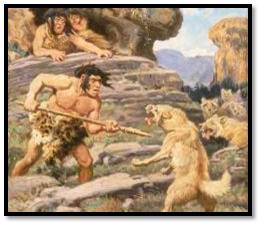

Documented evidences reveal that microlithic industries as will as Mesolithic tools had been used by the prehistoric man on the northwest of Lumbini.
3.Neolithic Age

The warmer climates of the sheltered valleys of the Terai region were ideally suited for the habitat of the prehistoric man. The Neolithic culture presents a change. Permanent habitation, start of agricultural activities, animal husbandry, industries of pottery and polished microlithic stone tools were the main features of the Neolithic man. The culture associated with food-production and self-dependence was also developed in the western Terai region of Nepal.
Proto-history

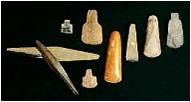
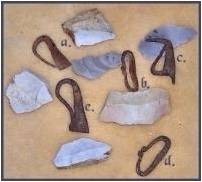
Lumbini was a part of Kapilvastu of the Śākyas in the western Terai region of Nepal. The Śākya kingdom was formed here by the vanished sons and daughters of the Kosala king Okkaka. According to the Divyadana the town of Kapilvastu was situated by the side of Bhāgirathi (Gańges), close to the āshrama of Rishi Kapilmuni. According to the Lalitavistār in course of ages it was organized into a big town as other people came from other sites to dwell in the new settlement.
The Eightfold Path
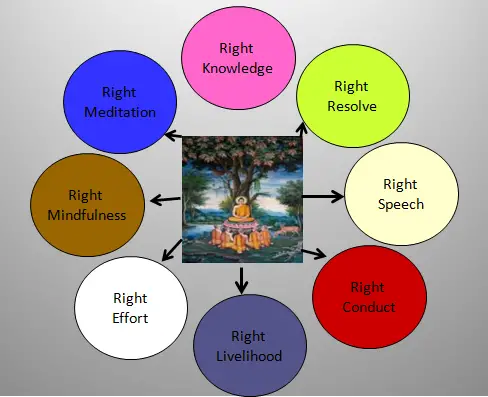
Cause & Effect : Karma
- Karma (Sanskrit: karman ; Pali : kamma = deed, operation) is a spiritual concept whereby every action( physical and mental) has inevitably a consequence
- can concern the current life as well as the lives after it
- closely connected to Samsara, which is belief in the cycle of new births
- every act and mental activity produces Karma and further ensnarements
- Buddhists try to stop the production of Karma to interrupt the circular flow
- the three ways to a positive Karma : modesty , goodness , understanding
Samsara – Circle of life
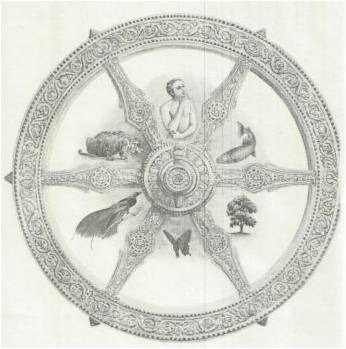
- A continuous circle of life, death, rebirth
- Target: break out of this circle
DHARMA
- Dharma has two different meanings
- Basis of the „Dharma“ are the four noble truths.
- These truths are building one of the three jewels and serve for a „resort object“
- The common ground of all phenomenon which are earthly ( nature and their legality )
BODHI
Bodhi is the process of the awakening, the enlightenment
Requirements:
- the comprehension of the four noble thruths
- The overcoming of all needs which are requiered for life
- Bodhi affords the breakthrough of Samsara and getting the Nirvana
NIRVANA
- You can‘t describe Nirvana with words, it can just be experienced through methods like meditation and awareness
- Nirvana describes the end-state, no rebirth in another sphere
- State of statelessness
Lumbini
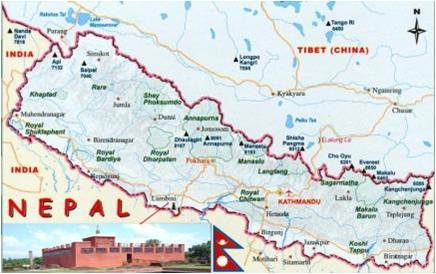
Lumbini, the birth place of Lord Buddha, is situated about 22 km. from Bhairahawa (Siddharthanagar), below the Churiā range, the foothills of the Himalayas, on the western bank of Telār River in Rupandehi district of Lumbini zone in Nepal.
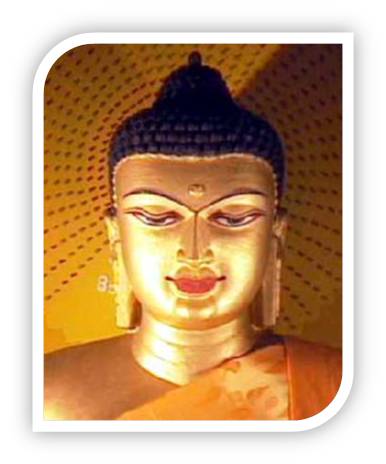
Siddhartha Gautama, the founder of this great movement who showed path of peace and harmony to millions was born here in 563 BC.
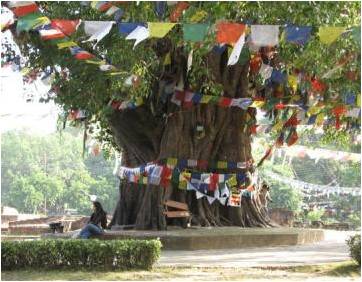
Tree under which Siddhartha Gautam was born.
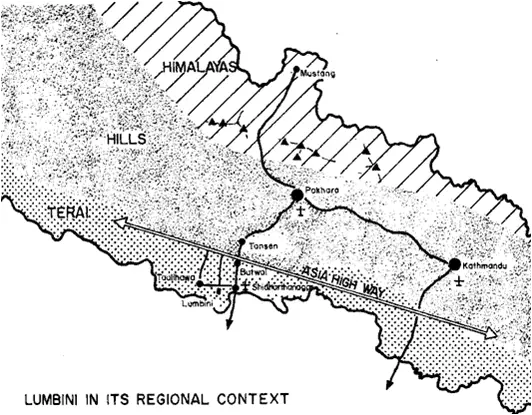
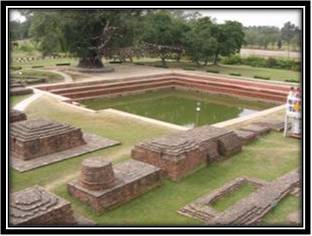
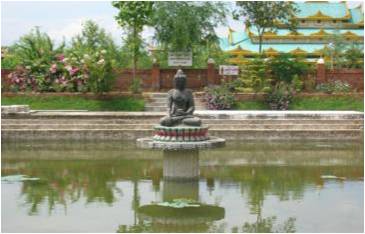
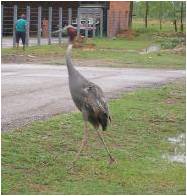
Lumbini lies in the Gandaki region of Terai, to the south of the foot-hills of the Himalayas, in the Kingdom of Nepal. Being the birthplace of Buddha it id one of the major Buddhist pilgrimage sites, yet until recently it has been inaccessible to pilgrim and tourist alike. But now with the completion of the local airport at Bhairahawa, and the construction of a road linking It with the Lumbini Sacred Garden, the Nepalese Government has provided the framework within which the Lumbini Development can function. The Lumbini Development has the role of a focal point in the development of the Gandaki region, and ultimately that of the entire Terai region.
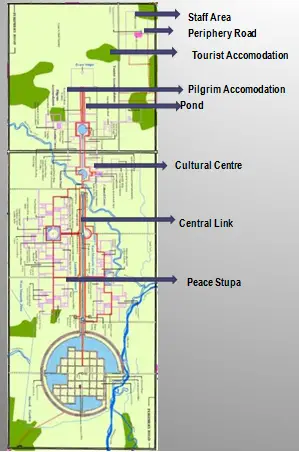
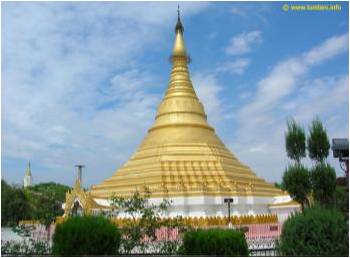
LUMBINI , the name of the Garden grove in which Gotama, Buddha, was born . It is first mentioned in a very ancient Pali ballad preserved in the Sutta Nipata.
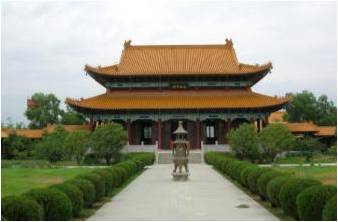

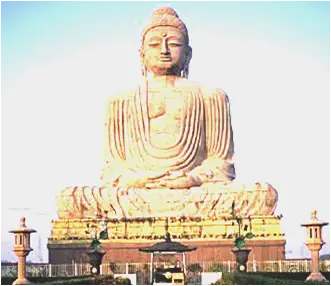
Leave a Reply
You must be logged in to post a comment.